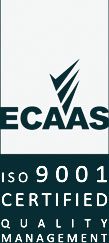The Therapeutic Goods Administration (TGA) has provisionally approved several monoclonal antibodies for COVID-19 treatment.
What are monoclonal antibodies?
Monoclonal antibodies are laboratory-made proteins that mimic or enhance the human immune system response to fight against harmful antigens such as viruses.
Monoclonal antibodies that can specifically target surface viral proteins to block the viral entry to host cells can be used for preventing and treating COVID-19.
In Australia, the TGA has provisionally approved sotrovimab, tixagevimab and cilgavimab (Evusheld) and casirivimab+imdevimab (Ronapreve).
Sotrovimab (Xevudy®)
Sotrovimab works by binding to the spike protein of the virus that causes COVID-19. This binding blocks the virus entering human cells and multiplying in the body. A recent study indicates that sotrovimab probably reduces the risk of being admitted to hospital or dying if used within 5 days of onset of COVID-19 symptoms.
The National COVID-19 Clinical Evidence Taskforce states sotrovimab is medically indicated for:
- adults and pregnant people in the second or third trimester if:
- within 5 days of onset of symptoms
- not fully vaccinated or fully vaccinated but significantly immunosuppressed
- not requiring oxygen
- one or more medical risk factors for disease progression:
- diabetes requiring medication
- BMI is more than 30
- chronic kidney disease (eGFR is less than 60)
- congestive heart failure NYHA class 2 or higher
- COPD
- moderate to severe asthma requiring regular inhaled steroid or a course of oral steroids in the last 12 months
- age > 55 years or > 35 years if Aboriginal or Torres Strait Islander or Pasifika
- children who:
- are aged more than 12 years
- weigh more than 99th centile for their gender and age or have type 2 diabetes mellitus
- are significantly immunosuppressed due to cancer treatment, organ transplant, medication or immune deficiency
- are within 5 days of symptom onset
- have a serious chronic condition which requires:
- specialist assessment more than 4 times a year
- 4 or more regular medications
- CPAP, BiPAP or oxygen for a respiratory condition
- feeding assistance with either nasogastric or PEG tube.
For a definition of ‘immunocompromised’, see ATAGI recommendations on the use of a third primary dose of COVID-19 vaccine in severely immunocompromised patients.
Contraindication and precautions
- Hypersensitivity: contraindicated in patients with known hypersensitivity to sotrovimab, or any of ingredients. Exercise caution in patients with a history of anaphylaxis to other medicines.
- First trimester pregnancy and breastfeeding.
- There is potential for placental transfer to the developing foetus.
- No information is available on the use of sotrovimab during breastfeeding. The amount present in breastmilk is likely to be very low, as sotrovimab is a large protein molecule but the median elimination half-life is 49 days, therefore the discontinuation of breastfeeding may be considered if appropriate.
- The effect of sotrovimab on fertility is unknown.
- Paediatric population: The safety and efficacy of sotrovimab has not been established in children under 12 years of age or weighing less than 40 kg.
Drug interactions
- There have been no formal drug interaction studies conducted with sotrovimab.
- The current recommendation is that COVID-19 vaccinations should be delayed until 90 days after administration of monoclonal antibodies to avoid potential interference with the immune response.
Administration
The current treatment is a single dose (500 mg) of sotrovimab given by intravenous infusion in a hospital setting. The patient must be observed during the infusion and for at least 60 minutes post infusion to ensure no adverse reactions. Infusion reactions include fever, chills, dizziness, dyspnoea, pruritus and rash. If these are mild to moderate, the infusion may be slowed or stopped and the reaction treated accordingly before being restarted. Anaphylactic reactions are rare but are a medical emergency.
Side effects
Reported common effects of sotrovimab include diarrhoea (1%) and hypersensitivity reactions (includes rash (2%), infusion-related reaction, bronchospasm). Following the observation period, patients should be provided with advice regarding post infusion requirements, including adverse effects and who to contact for more information. All adverse events should be reported via the TGA.
Referrals for monoclonal antibody treatment to the Mid North Coast Local Health District are found on HealthPathways under COVID-19 Active Case Management. The form has a check box at the bottom to indicate a referral request for monoclonal antibody treatment. The form should be sent via email.
Need HealthPathways login details?
Username: manchealth
Password: conn3ct3d
Frequently asked questions
It will be reviewed within 1–2 business days.
1–2 business days.
Coffs Harbour Health Campus and Port Macquarie Base Hospitals only.
Patients are encouraged to manage their own travel. Transport may be able to be arranged through the treating facility if no other option is available.
Usually one hour is enough, there have not been any adverse reactions.
If an adverse reaction occurs immediately, the clinician on-site will report this.
If it is a delayed reaction and the GP is advised of it by the patient, the GP should report it.
Clients also receive a patient information sheet to read (via email).
They are advised the risks/benefits of the infusion and potential side effects (rash or very unlikely allergic reaction).
For more information
View the Agency for Clinical Innovation’s fact sheet – Model of Care for the Use of anti‑SARS‑COV‑2 Monoclonal Antibodies for Adults with Mild and Moderate COVID‑19 (PDF, 325 KB).
View the Australian National COVID-19 Clinical Evidence Taskforce’s flowchart – Disease-modifying treatments for adults with COVID-19 (PDF, 255 KB).



